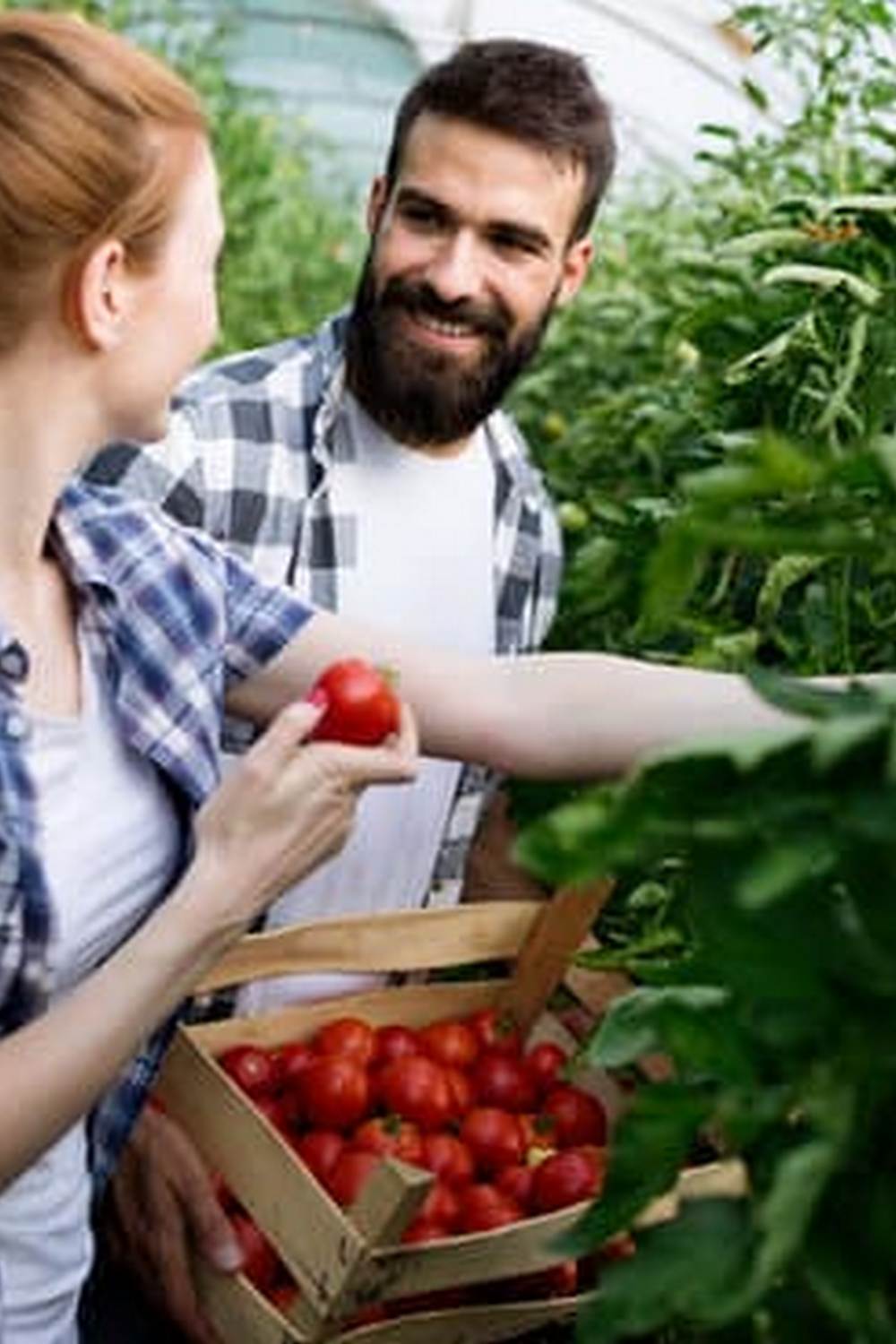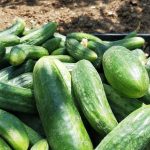Vertical vegetable gardening has taken the gardening world by storm, offering a practical solution for those with limited space. The trend of growing vegetables vertically has gained momentum in recent years as more people are looking for innovative ways to grow their own produce. In this article, we will explore the concept of vertical vegetable gardening and why it is becoming increasingly popular among urban gardeners and plant enthusiasts.
Vertical vegetable gardening involves growing plants upwards rather than outwards, utilizing walls, trellises, and other structures to maximize space. This method not only allows for efficient use of space but also offers several benefits such as enhanced drainage, reduced pest problems, and easier harvesting. By going vertical, gardeners can significantly increase their yield without compromising on the quality of their crops.
With the rising interest in sustainability and self-sufficiency, vertical vegetable gardening provides a practical solution for those looking to grow their own food in limited spaces. Whether you have a small balcony, patio, or backyard, vertical gardening can be a game-changer. In the following sections, we will delve into the various aspects of this innovative gardening technique – from selecting the right location to maintenance tips and showcasing stunning examples through pictures of vertical vegetable gardening projects.
Benefits of Vertical Vegetable Gardening
Vertical vegetable gardening offers a multitude of benefits that make it an attractive option for both experienced gardeners and beginners alike. One of the main advantages of this method is the ability to save space, making it ideal for urban dwellers with limited outdoor areas. By utilizing vertical structures such as trellises, hanging baskets, or wall-mounted planters, gardeners can maximize their growing area and produce a bountiful harvest in a small footprint.
Enhancing drainage is another key benefit of vertical vegetable gardening. When plants are grown in traditional horizontal gardens, water can pool around the roots and lead to issues like root rot and fungal diseases. In contrast, vertical gardens allow excess water to drain quickly and efficiently, reducing the risk of overwatering and promoting healthier plant growth overall.
Furthermore, vertical vegetable gardening can help reduce pest problems by making it more challenging for insects and critters to access your plants. Elevating your crops off the ground can deter pests like slugs, snails, and even some smaller mammals from feasting on your vegetables. Additionally, certain flowering plants used in vertical gardens can attract beneficial insects that help control harmful pests naturally.
To achieve these benefits in your own vertical vegetable garden, consider incorporating a variety of structures like tall trellises for climbing plants, wall-mounted pockets for herbs and small veggies, or hanging baskets for trailing crops. By designing your vertical garden thoughtfully with proper drainage systems and strategic plant placement, you can enjoy a successful harvest while maximizing space efficiency and minimizing pest issues.
Choosing the Right Location
When it comes to vertical vegetable gardening, one of the most crucial aspects to consider is selecting the right location for your garden. The success of your vertical garden largely depends on the amount of sunlight, water availability, and overall environment in which it is placed. Here are some tips for choosing the perfect spot for your vertical garden:
Sunlight
One of the key factors for a thriving vertical vegetable garden is adequate sunlight. Most vegetables require at least 6-8 hours of direct sunlight daily to grow well. Therefore, when selecting a location for your vertical garden, choose an area that receives ample sunlight throughout the day. South-facing walls or fences are often ideal for maximizing sun exposure.
Water Availability
In addition to sunlight, access to water is essential for the health of your vertical garden. Make sure the location you choose allows easy access to water sources for regular irrigation. Consider installing a drip irrigation system or setting up a rainwater harvesting system to ensure your vegetables receive consistent moisture.
Accessibility
Another important factor to consider when choosing a location for your vertical vegetable garden is accessibility. Ensure that the spot you select is easily accessible for planting, watering, and harvesting. A convenient location will make it easier for you to care for your plants and enjoy the fruits of your labor.
By taking these tips into consideration when choosing the right location for your vertical vegetable garden, you can create an optimal environment for your plants to thrive and produce a bountiful harvest. With careful planning and placement, you can set yourself up for gardening success and enjoy fresh produce right at your fingertips.
Essential Tools and Materials
Vertical vegetable gardening is an innovative way to grow your own produce in limited spaces. To get started with this rewarding gardening method, you will need a few essential tools and materials. Having the right equipment will not only make your gardening experience more efficient but also help ensure the success of your vertical garden.
Growing Containers
One of the key components of vertical vegetable gardening is having suitable containers to hold the plants. You can choose from a variety of options such as hanging bags, stackable planters, or wall-mounted boxes. Make sure the containers have proper drainage holes to prevent waterlogging and root rot.
Suitable Soil Mix
Selecting the right soil mix is crucial for the health and growth of your vertical garden vegetables. Opt for a lightweight, well-draining potting mix that is rich in organic matter. This will provide essential nutrients to your plants and promote healthy root development. Avoid using heavy garden soil, as it can become compacted in vertical containers.
Support Structures
To support your vertical garden structure, you may need trellises, stakes, or frames depending on the design you choose. These structures will help keep your plants upright and prevent them from leaning or falling over as they grow. Make sure to install them securely to avoid any accidents or damage to your garden.
By investing in these essential tools and materials, you can kickstart your vertical vegetable gardening journey with confidence. With proper planning and preparation, you will be able to create a thriving vertical garden that yields a bountiful harvest of fresh and delicious vegetables. Get ready to enjoy the satisfaction of growing your own food right at home.
Best Vegetables for Vertical Gardening
Vertical gardening is a great way to maximize space and grow a variety of vegetables in a compact area. When it comes to choosing the best plants for vertical gardening, there are several factors to consider, such as the growth habits of the plant, its support needs, and its adaptability to being grown vertically. Here are some recommendations for plants that thrive in vertical structures:
- Tomatoes: One of the most popular choices for vertical gardening, tomatoes can be trained to grow up trellises or stakes. Look for indeterminate varieties that will continue to produce throughout the season.
- Cucumbers: Cucumbers are another excellent choice for vertical gardens, as they can easily climb up trellises or fences. Choose vining varieties for best results.
- Pole Beans: Pole beans are well-suited for vertical gardening, as they naturally climb and twine around supports. They are a great option for adding height and structure to your garden.
Vertical gardening can also be ideal for growing leafy greens like lettuce, spinach, and kale. These plants have shallow root systems and do not require a lot of space horizontally, making them perfect candidates for growing in containers or vertically on walls or fences.
In addition to the typical vegetables grown in vertical gardens, consider incorporating herbs like basil, cilantro, and parsley. Herbs tend to thrive in small spaces and can add both flavor and visual interest to your vertical garden.
By selecting the right vegetables for your vertical garden based on their growth habits and support needs, you can create a thriving edible oasis that not only looks beautiful but also yields a bountiful harvest throughout the growing season. With careful planning and proper care, your vertical vegetable garden is sure to be a success.
Vertical Garden Design Ideas
Vertical vegetable gardening is not only a practical way to grow your own produce in limited spaces but also an opportunity to showcase your creativity and design skills. When it comes to designing your vertical garden, there are endless possibilities to explore.
One creative way to arrange and display your vegetables in a vertical garden is by using a variety of containers of different shapes, sizes, and colors. Mix and match pots, hanging baskets, wall planters, or even repurposed objects like old shoes or tin cans to add visual interest to your vertical garden.
Another innovative design idea for a vertical vegetable garden is creating a living wall. A living wall consists of a vertical structure covered in plants that can either be freestanding or attached to a wall. This type of design not only adds greenery to your space but also serves as a unique focal point. Consider using modular planting systems that allow you to easily customize the layout of your living wall and change the arrangement as needed.
| Image | Description |
|---|---|
 | A stunning living wall covered in lush green plants that create a calming oasis |
 | An artistic trellis design featuring colorful vegetables climbing up the structure |
 | A display of mixed containers with herbs, lettuces, and peppers arranged in a harmonious composition |
Maintenance Tips
Vertical vegetable gardening, while space-saving and efficient, requires proper maintenance to ensure a bountiful harvest. One of the key maintenance tips is to regularly check the irrigation system to make sure all plants are receiving adequate water. Vertical gardens can sometimes have uneven water distribution, so it’s crucial to monitor the moisture levels in the soil and adjust accordingly.
In addition to watering, it is essential to regularly inspect your vertical garden for any signs of pests or diseases. Because the plants are grown in close proximity, pests can quickly spread throughout the garden if not addressed promptly. Consider using natural remedies or organic pesticides to keep your vertical garden healthy without harmful chemicals.
Furthermore, regular pruning and harvesting are important tasks for maintaining a vertical vegetable garden. Pruning helps control the growth of plants and improves air circulation, while harvesting allows for continuous production and prevents overcrowding. Be sure to remove any overripe or diseased fruits and vegetables promptly to prevent them from attracting pests or spreading diseases to healthy plants.
| Maintenance Tips | Details |
|---|---|
| Watering | Monitor irrigation system and soil moisture levels regularly. |
| Pest Control | Regularly inspect plants for pests and diseases; use natural remedies if needed. |
| Pruning and Harvesting | Control plant growth with pruning; harvest regularly to maintain plant health. |
Showcase of Stunning Vertical Vegetable Gardens
Vertical vegetable gardening has undoubtedly transformed the way individuals approach growing their own produce. The trend towards utilizing vertical spaces for gardening has gained significant traction due to its numerous advantages, such as maximizing space, improving drainage, and minimizing pest issues. Incorporating a vertical garden not only adds aesthetic appeal but also provides a practical solution for those with limited gardening space or soil.
One of the most effective ways to find inspiration and innovative ideas for your vertical vegetable garden is by exploring pictures of successful projects. These visual representations can offer valuable insights into different design options, plant arrangements, and creative techniques that can be implemented in your own gardening endeavors. By observing these stunning images of flourishing vertical vegetable gardens, you can envision the potential beauty and productivity that such structures can bring to your outdoor or indoor space.
As you browse through pictures of vertical vegetable gardening, you may come across a diverse range of designs and setups that showcase the versatility of this gardening method. From simple wall-mounted planters to elaborate trellis systems, each picture serves as a testament to the limitless possibilities for creating a thriving vertical garden.
Whether you are looking to grow herbs, leafy greens, or even compact fruit varieties, these visual examples can guide you in selecting the right plants and designing a layout that suits your preferences and available space.
Frequently Asked Questions
What Vegetables Work Best in a Vertical Garden?
Some vegetables that work best in a vertical garden include tomatoes, peppers, cucumbers, and peas. These plants thrive in small spaces and can be trained to grow vertically with proper support.
What Direction Should a Vertical Garden Face?
A vertical garden should ideally face south or west to maximize sunlight exposure. This orientation ensures that your plants receive sufficient sunlight throughout the day, which is essential for their growth and development.
How Do You Arrange a Vertical Garden?
When arranging a vertical garden, consider the sunlight requirements of each plant to ensure they all receive adequate light. Place taller plants at the back and smaller ones at the front to prevent shading. Additionally, provide sturdy support structures for climbing plants to grow upwards efficiently.

If you’re looking to get into vegetable gardening, or are just looking for some tips on how to make your current garden better, then you’ve come to the right place! My name is Ethel and I have been gardening for years. In this blog, I’m going to share with you some of my best tips on how to create a successful vegetable garden.





